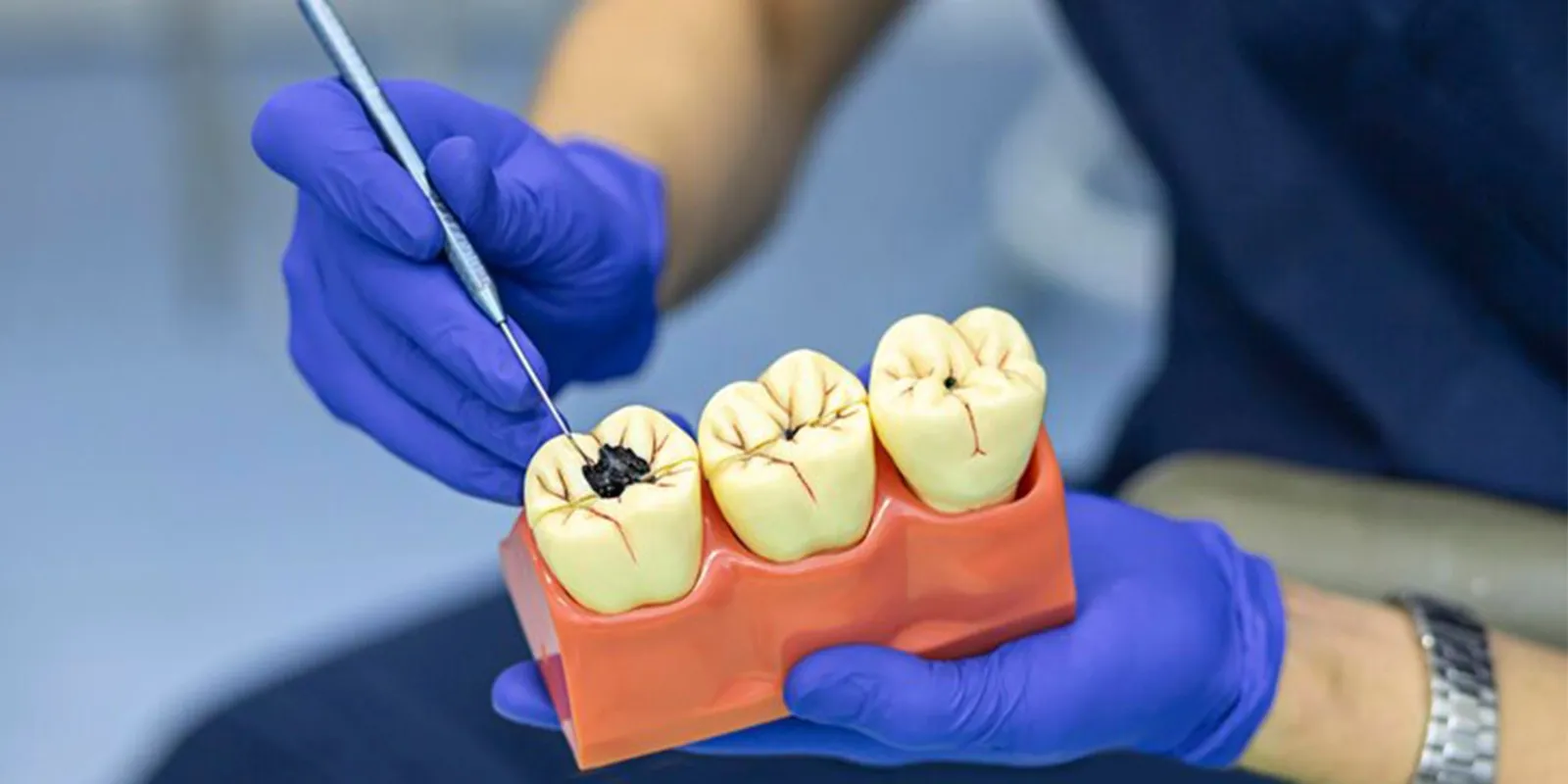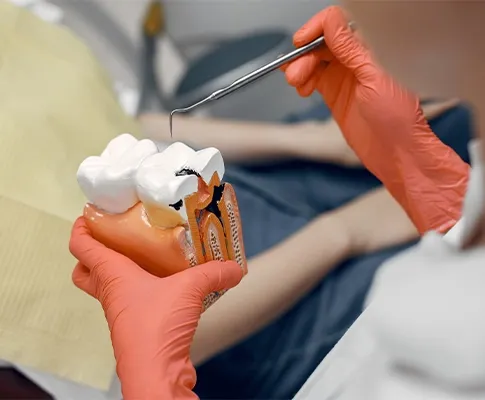
What Happens During a Root Canal? A Step-by-Step Look at the Procedure

11 June 2025
If you have been told you need a root canal, you might be feeling anxious or uncertain about the procedure. After all, many people associate root canals with pain and discomfort. However, understanding what happens during a root canal can help you stay calm and make informative decisions.
So, here we will take a detailed look at the root canal procedure. We will describe the entire procedure into simple steps to give you a clear idea of what to expect during root canal.
Root Canal Step-by-Step Procedure
Now, let’s get into the root canal treatment process and explore each step involved.
Diagnosis and Preparation
Before the root canal, dentist will conduct a thorough examination of your tooth. This usually involves taking X-rays to assess the extent of the problem. They will discuss your symptoms. It may include pain, swelling, or sensitivity to hot and cold.
Once it is determined that a root canal is necessary, dentist will explain the procedure and answer any questions you may have. Understanding the process can help ease any anxiety you might be feeling.
Anesthesia
On the day of your root canal, dentist will begin by numbing the area around the affected tooth. They will administer a local anesthetic to ensure you don’t feel any pain during the procedure. Many people worry about whether is root canal painful. However, the anesthesia helps make the process as comfortable as possible.

Tooth Isolation
Dentist will place a rubber dam around the tooth after the area is numb. This helps keep the tooth dry and free from saliva during the procedure. It also ensures a clean working area which is important for a successful treatment.
Access Opening
Then, dentist will create a small opening in the crown of the tooth. This opening allows access to the pulp chamber and root canals, where the infection or damage is located. Dentist will use specialized instruments to gently remove any debris and expose the pulp.
Cleaning and Shaping the Canals
Once the pulp chamber is accessible, dentist will remove the infected or damaged pulp tissue using small and precise tools. This step is important for eliminating what is causing the infection.
After the pulp is removed, the dentist will clean and shape the inside of the root canals. This process may involve using a series of files to ensure that the canals are smooth and free of any remaining bacteria.
Disinfection
After cleaning, dentist will disinfect the canals to kill any lingering bacteria. This step is vital for preventing future infections. The dentist may use a solution to flush out the canals thoroughly and ensure they are clean.
Filling the Canals
Once the canals are cleaned and disinfected, they will be filled with a biocompatible material called gutta-percha. This material seals the canals and helps prevent any future infection. The dentist will carefully place the gutta-percha into the canals. It helps in ensuring that they are completely sealed.
Sealing the Tooth
After the canals are filled, the dentist will close the access opening with a temporary or permanent filling. If a temporary filling is used, you may need to return for a follow-up appointment to have a crown placed on the tooth. A crown will restore the tooth’s strength and function. This helps you to protect it from further damage.
Post-Procedure Instructions
Once the procedure is complete, your dentist will provide you with post-procedure care instructions. This may include recommendations for pain management, such as over-the-counter pain relievers. It also includes guidance on what to eat and avoid during the initial recovery period.
Root Canal Recovery
After your root canal, you can generally return to your normal activities the same day. However, it's essential to follow your dentist's post-procedure care instructions for a smooth recovery.Here are some tips for a successful recovery.
1. Pain Management
Take any prescribed pain medications as directed. Over-the-counter pain relievers can also help reduce discomfort. You might experience some soreness after the anesthesia wears off, which is normal.
2. Diet
Stick to soft foods for the first few days. You should also avoid chewing on the treated tooth until your dentist confirms it is ready for normal use. Foods like yogurt, mashed potatoes, and smoothies are excellent choices while you recover.
3. Oral Hygiene
You can continue brushing and flossing your teeth. However, it is important to be gentle around the treated area to avoid irritation. Maintaining good oral hygiene is crucial for preventing infection and promoting healing.
4. Follow-Up Appointments
If your dentist recommends a follow-up visit for a crown placement or further evaluation, make sure to schedule it promptly. Crowns help protect the tooth and restore its function. So, don’t skip this important step.

Need Any Help?
Contact UsCommon Concerns About Root Canal and Its Recovery.
How Long Does a Root Canal Take?
The duration of a root canal can vary depending on several factors, including the complexity of the case and the number of canals involved. On average, a root canal takes about one to two hours to complete. If additional treatments, such as a crown placement, are needed, this may require another appointment.
What to Expect During a Root Canal?
Many people worry about the discomfort associated with root canals. However, most patients report feeling minimal pain during the procedure with modern dental techniques and anesthesia. After the numbness wears off, you may experience some soreness or discomfort in the treated area.
It is also common to have some swelling following the procedure. Your dentist will advise you on how to care for the area and what signs of complications to watch for during your recovery.
Is a Root Canal Really Painful?
One of the most common misconceptions about root canals is that they are extremely painful. It is normal to feel anxious about the procedure. However, most patients report feeling little to no pain during the actual treatment due to the anesthesia. After the procedure, some discomfort may occur, but it is usually manageable with over-the-counter pain relievers.
Why Do I Need a Root Canal?
If your dentist recommends a root canal, it is typically because the pulp of your tooth is infected or damaged. If left untreated, this can lead to further complications. These include abscesses and tooth loss. A root canal is a way to save your tooth and alleviate pain. It will be allowing you to maintain your natural smile.
What Happens If I Don’t Get a Root Canal?
If you choose to avoid a root canal when it is needed, the infection can worsen. It will be leading to severe pain, swelling, and even tooth loss. The infection can also spread to other parts of your body. This can have serious health consequences. It is always best to address dental issues promptly to avoid complications.
Final Thoughts
Understanding what happens during a root canal can help you reduce your stress for the procedure. The thought of a root canal may be daunting. It is a routine dental treatment designed to save your tooth and relieve pain.
You can ensure a smooth recovery and maintain your dental health for years to come. It is possible by following instructions of your dentist and taking care of your oral health.
Contact your Dentist today, Dr. Aja at One Dental SF, learn more about what happens during a Root Canal? And a Step-by-Step Look at the Procedure .
Resource:
Disclaimer
*This media/content or any other on this website does not prescribe, recommend, or prevent any treatment or procedure. Therefore, we highly recommend that you get the advice of a qualified dentist or other medical practitioners regarding your specific dental condition. *